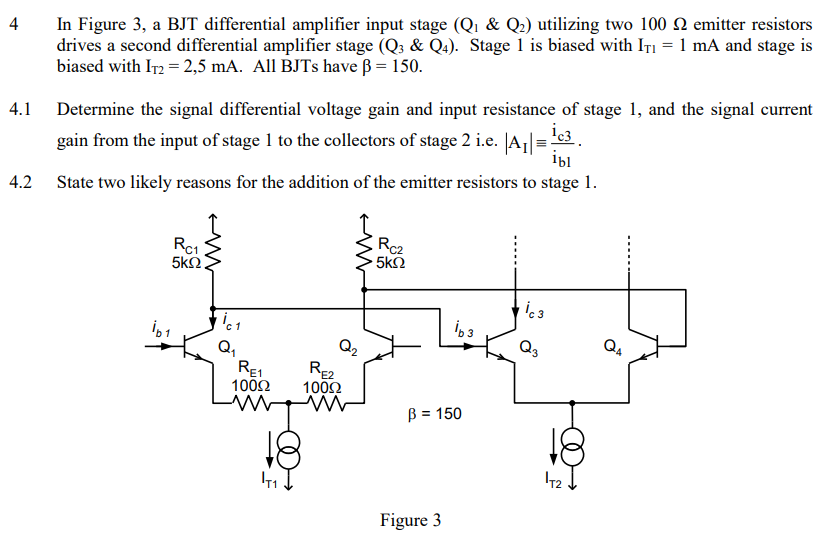4 In Figure 3, a BJT differential amplifier input stage (Q1 & Q2) utilizing two 100 Ω emitter resistors drives a second differential amplifier stage (Q3&Q4). Stage 1 is biased with IT1 = 1 mA and stage is biased with IT2 = 2,5 mA. All BJTs have β = 150.4.1 Determine the signal differential voltage gain and input resistance of stage 1 , and the signal current gain from the input of stage 1 to the collectors of stage 2 i. e. |AI|≡ic3 ib1. 4.2 State two likely reasons for the addition of the emitter resistors to stage 1. Figure 3
